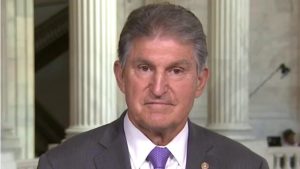From cradle to grave, from womb to tomb, the Build Back Better spending plan being drafted by Democrats is the broadest, most far-reaching, comprehensive expansion of government and spending ever proposed, one that would eclipse Roosevelt’s New Deal by a wide margin. As the New York Times reports, “. . . the proposed legislation would be so transformative — a cradle-to-grave reweaving of a social safety net frayed by decades of expanding income inequality, stagnating wealth and depleted governmental resources, capped by the worst public health crisis in a century.”
Using the reconciliation process, the Democrats “approved the budget blueprint in a 220-212 vote over unanimous GOP opposition,” according to Business Insider. As Speaker of the House Nancy Pelosi, stated in the grandest of terms on the floor of the House of Representatives, “The Build Back [Better] agenda is one that is liberating for families, not just women. Moms and dads with child care, with a Child Tax Credit, with universal pre-K, with home health care, with workforce development so that not only are we building the physical infrastructure of America. We are building the human infrastructure of America to enable many more people to participate in the success of our economy and the growth of our society.”
With a hefty price tag of $3.5 trillion, the plan, for which details are being worked out in committees, would target approximately $1.8 trillion in investments in working families, the elderly, and the environment, including the following broad aspects of our economy and society, according to WUSF Public Media:
- Education: $726 billion toward universal pre-k for 3 and 4-year-olds, child care for working families, tuition-free community college, investments in historically Black colleges and universities, and investments in primary care.
- Immigration: $107 billion toward lawful permanent status for qualified immigrants, border security measures. (Judiciary Committee)
- Health care: At least $1 billion in deficit reduction, with investments in paid family and medical leave, ACA expansion extension, expanding Medicare to include dental, vision and hearing benefits along with lowering the eligibility age. T
- Agriculture: $135 billion to go toward agriculture conservation, drought and forestry programs to reduce carbon emissions and prevent wildfires, climate research, debt relief, child nutrition, and funding for a Civilian Climate Corps.
- Housing: $332 billion for housing affordability, rental assistance, homeownership initiatives, revitalization projects, zoning, transit improvements and public housing investments. (Banking and Housing Committee)
- Clean energy: $198 billion toward clean electricity payment program, financing for domestic manufacturing of clean energy and auto supply chain technologies, federal procurement of energy-efficient materials, and climate research. (Energy and Natural Resources Committee)
- Climate initiatives: $67 billion toward funding low-income solar technologies, environmental justice investments in clean water affordability and access, EPA climate and research programs, federal investments in energy-efficient buildings and green materials, and investments in clean vehicles. (Environment and Public Works Committee)
- Homeland security: $37 billion toward improving cybersecurity infrastructure, border management investments, federal investments in green materials procurement. (Homeland Security Committee)
- Investments in Native communities: $20.5 billion toward Native health programs and facilities, education, housing, energy, and language programs. (Indian Affairs Committee)
- Small businesses: $25 billion toward small business access to credit, investment and markets. (Small Business and Entrepreneurship Committee)
- Veterans: $18 billion toward upgrading VA facilities. (Veterans Affairs Committee)
Of course, these bold spending plans have to be funded, which means tax increases along with repeals of standing deductions. Americans for Tax Reform list the following increases to taxes and changes to deductions:
- Increasing the corporate tax rate from 21 percent to 28 percent
- At least 2 million small businesses, including 1.4 million small businesses organized as c-corporations and family-owned farms would see their marginal tax rates rise to 39.6%
- Doubling the capital gains tax to 43.4 percent
- Taking away step-up in basis and imposing a second death tax by taxing unrealized capital gains at death
- Imposing a 15 percent minimum tax on “book income” that will disallow the use of important deductions and credits
- Increasing the top income tax rate to 39.6%
- New taxes on American energy including a tax on manufacturers based on their methane production and a carbon border tax
- Creating a 21 percent global minimum tax
- Repealing the deduction for foreign-derived intangible income
Chris Edwards of the Cato Institute argues such a volume and array of spending is reckless and irresponsible, violating the tenets of Federalism as outline in the U.S. Constitution, stating, “Expanding federal spending and regulatory power over state, local, and private activities makes no practical sense. If Ohio needs more highways, then the Ohio legislature should fund them. If Kentucky needs more public transportation, then local governments in the state should handle it. If Louisiana needs a hydrogen hub, then businesses in the state should invest in it.”

Moreover, spending at such high levels, along with the necessary taxation to support it, may have a dampening effect on the broader economy for years to come. As the Tax Foundation points out, “Biden’s tax plan would reduce the economy’s size by 1.62 percent in the long run. The plan would shrink the capital stock by about 3.75 percent and reduce the overall wage rate by a little over 1 percent, leading to about 542,000 fewer full-time equivalent jobs.”

Ambitious as it is, Democrats will likely face stiff headwinds when they try to push the legislation through the Senate. Senator Joe Manchin (D-W.Va) feels the Democrats should pause their efforts to reassess circumstances before rushing to spend an unprecedented amount of money. Manchin argued, “I have always said if I can’t explain it, I can’t vote for it, and I can’t explain why my Democratic colleagues are rushing to spend $3.5 trillion,” adding, a “pause is warranted because it will provide more clarity on the trajectory of the pandemic, and it will allow us to determine whether inflation is transitory or not.”
Sen. Krysten Sinema, D-Ariz., concerned about how Democrats have tried the fate of this bill to the $1.5 infrastructure plan, also signaled her opposition to the future legislation, issuing the following press statement though Politico: “Proceedings in the U.S. House will have no impact on Kyrsten’s views about what is best for our country – including the fact that she will not support a budget reconciliation bill that costs $3.5 trillion.” Even with the tool of reconciliation, in a highly partisan Senate, without Manchin’s and Sinema’s support, the Build Back Better Plan is in trouble.






